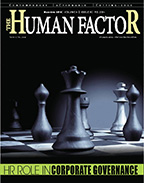Innovation Ecosystems Ron Adner (the Associate Professor of Business Administration, Tuck School of Business at Dartmouth, and author of the new book The Wide Lens: A New Strategy for Innovation), writes on the role of innovation ecosystems Issue Date - 01/04/2014 |
 There is a blind spot that undermines great managers in great organisations even when they identify real customer needs, deliver great products, and beat their competition to market. Philips Electronics fell victim to this blind spot when it spent a fortune to pioneer high-definition television (HDTV) sets in the mid-1980s. The company’s executives drove a development effort that succeeded in creating numerous breakthroughs in television technology, offering picture quality that customers loved and the competition, at the time, could not match. Yet, despite sterling execution and rave reviews, Philips’s high-definition TV flopped. Even the most brilliant innovation cannot succeed when its value creation depends on other innovations – in this case it was the high-definition cameras and transmission standards necessary to make high-definition TV work – that fail to arrive on time. Philips was left with a $2.5-billion write-down and little to display its pioneering efforts by the time HDTV finally took off 20 years later. Sony suffered from a similar blind spot, winning a pyrrhic victory as it raced to bring its e-reader to market before its rivals only to discover that even a great e-reader cannot succeed in a market where customers have no easy access to e-books. And, Johnson Controls, which developed a new generation of electrical switches and sensors that could dramatically reduce energy waste in buildings and deliver substantial savings to occupants, discovered that unless and until architects, electricians, and a host of other actors adjusted their own routines and updated their own capabilities, the value of its innovations would never be realised. In all these cases, smart companies and talented managers invested, implemented, and succeeded in bringing genuinely brilliant innovations to market. But after the innovations launch, they failed. The companies understood how their success depends on meeting the needs of their end-customers, delivering great innovation, and beating the competition. But all three fell victim to the innovator’s blind spot: failing to see how their success also depended on partners who themselves would need to innovate and agree to adapt for efforts to succeed. Welcome to the world of innovation ecosystems – a world in which the success of a value proposition depends on creating an alignment of partners who must work together in order to transform a winning idea to a market success. A world in which failing to expand your focus to include your entire ecosystem will set you up for failure. Though, it is avoidable failure. There is a growing trend to not do it alone. In a 2011 survey of senior executives by the Corporate Executive Board, 67% expected new partnerships and 49% expected new business models to be critical drivers of their growth in the upcoming five to ten years. To be sure, great customer insight and execution remain vital. But they are only necessary – not sufficient – conditions for success. Rather, two distinct risks now take centre stage: I. Co-innovation Risk: The extent to which the success of your innovation depends on the successful commercialisation of other innovations. II. Adoption Chain Risk: The extent to which partners will need to adopt your innovation before end-consumers have a chance to assess the full value proposition. |
 Co-innovation risk and adoption chain risk lurk in the blind spot of traditional strategy. They remain dormant as long as your innovations follow established lines. But when you try to break out of the mold of incremental innovation, ecosystem challenges are likely to arise. This is not a problem if you are prepared. It can be devastating if you are not. Just like the blind spot when you are changing driving lanes, not seeing the other car coming doesn’t make the accident any less awful. The same is true with strategy: a strategy that does not properly account for the external dependencies on which its success hinges does not make those dependencies disappear. It just means that you will not see them until it is too late. Expanding your focus to include your ecosystem rather than just your innovation changes everything right from how you prioritise opportunities and threats to how you think about market timing and positioning, and define and measure success. And indeed, today’s exemplarfirms – from Apple in consumer electronics, Amazon in retail, and Roche in pharmaceuticals to Raytheon in defense, Hasbro in toys and Turner in construction – do much more than ‘just’ execute flawlessly on their own initiatives. They follow a distinct set of strategies to orchestrate the activities of an array of partners so that their joint efforts increase the value created by their own initiatives many times over. These leaders have understood the nature of the blind spot and have expanded their perspective. They have deployed a wider lens in setting their strategy and prospered in their embrace of the ecosystem opportunity. Dependence is not becoming more visible, but it is becoming more pervasive. What you do not see can kill you. Do not let your blind spot plan your downfall. The innovator’s blind spot: Michelin’s Run-flat Odyssey The Story: In 1998, Michelin launched PAX System, a revolutionary run-flat tire. PAX allowed drivers to continue driving at 55 mph for up to 125 miles before requiring repair for their punctured tire. It eliminated the danger of blowouts, frustration of roadside tire changes, the inconvenience of waiting for tow trucks – all without sacrificing performance or comfort (the bane of earlier run-flat approaches). Michelin heralded PAX as, “a major development in vehicle safety, as important as the introduction of radials, if not more important“. Industry analyst J.D. Power & Associates predicted that by 2010 more than 80% of cars would be fitted with run-flats. The Challenge: Beyond the tire, the PAX System depended on a host of other innovations to deliver its value – a revolutionary wheel hub that would clamp the tire rather than rely on air pressure to keep it in place; an inner support ring that would sit between the tire and the wheel; a pressure monitoring system. Furthermore, as the PAX System was integrated into the car, it needed to be incorporated into vehicles at the design stage. Finally, repairing the new tire required new tire changing equipment that could unclamp and reclamp the tire and the wheel. The Strategy: Michelin was aware of these challenges from the outset, and devoted extensive attention and resources to bringing partners on board. Automakers saw an opportunity to differentiate on safety and design (finding new uses for the space formerly taken by the spare tire). Garages would enjoy higher margins on repairs. And, in an unprecedented move for this ultra-competitive industry, Michelin offered to license the PAX System technology. Giants, including Goodyear and Toyo, acknowledging its superiority, dropped their own run-flat efforts and adopted the PAX System as an industry standard. |



